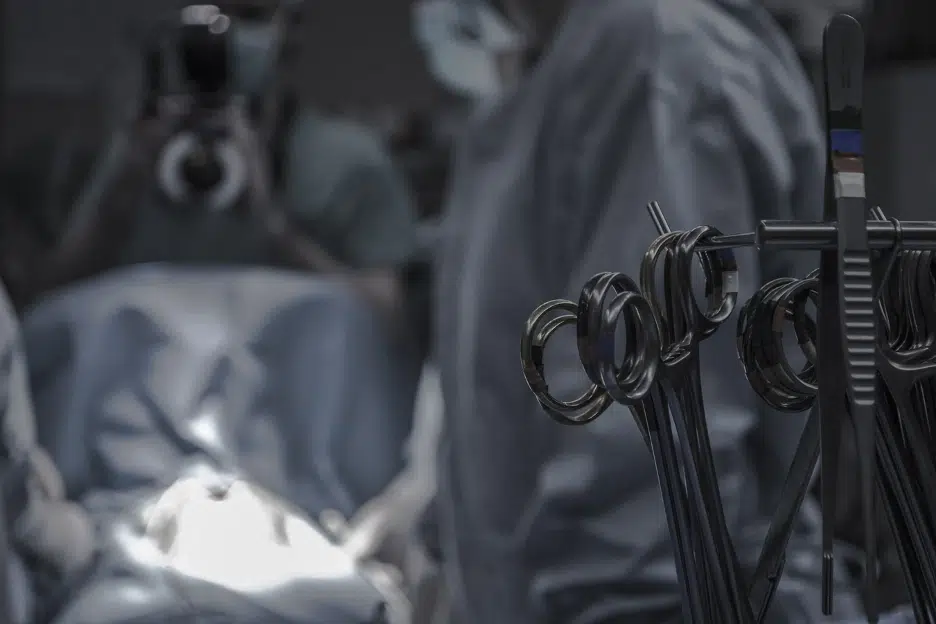In recent years, the topic of abortion has involved much debate over those children who survive abortions. With more and more abortion survivors coming forward to share their stories, and with the increasing discord between pro-life and pro-choice politicians over legislation such as the Born-Alive Abortion Survivors Protection Act, the issue has taken the national stage.
In the debate over abortion survivors, however, there is one key piece of information generally missing: How many are there? How many are being left to die and how many are being cared for? How many grow up to be adults, and with what little information we have, can such a question ever be answered?
Do Babies Survive Abortion?
If pro-choice politicians and activists are to be believed, abortion survivors are a thing of the past. Abortionists have become so efficient that survival is impossible, and if it ever did happen, the child would be given proper and adequate medical care. Because the only alternative to such claims is so unthinkable, that many babies are surviving abortions and are then just being left to die, this claim has been accepted by a great many people.
It is easier to think that people do not survive abortion. It is easier to think that survivors are given proper medical care. It is not, however, in any way accurate. Though the information we have about abortion survivors in the United States is limited, what we have unequivocally demonstrates that such claims are entirely false.
It is easy enough to see that abortion survivors exist. The solid reports from Arizona, Minnesota, and Florida, the three states that provide reports on abortion survivors, detail dozens of unique cases of abortion survivors and their neglect that occur every single year. Those reports alone should demonstrate that we have a problem, but that’s just three out of fifty states.
Statistical Difficulties and Complications in Estimations
Accurately determining how often children survive abortions in the United States in total is difficult, to say the least. Not only do we lack any solid reporting on abortion survivors on a national level, but it is also unlikely that any such reporting could truly give us an idea of the magnitude of the issue even if it did exist. This inaccuracy is the result of a number of factors, but chief among them is the tendency for underreporting.
Underreporting of abortion survivors is not only a well-known phenomenon, but it’s an expected one. Dr. Willard Cates, the first permanent Chief of the Abortion Surveillance Branch at the CDC, board member of the pro-choice research organization Guttmacher Institute, and an expert of medical statistics, has stated, “It’s like turning yourself in to the IRS for an audit. What is there to gain? The tendency is not to report because there are only negative incentives.” For every survivor that is discovered, a hundred more likely go unreported simply because doctors have strong reason to not report on such dreaded complications. As such, any estimate made here likely underestimates their prevalence.
Some states that have reporting requirements for abortion survivors, such as Arizona, have attempted to resolve these issues in various ways, such as requiring by default that all medical staff present certify that the child was dead by the time it was born. Whether or not such legislation has had any impact on underreporting and misrepresentation, however, is unclear.
Though the information we have is limited, it is not impossible for us to craft a number of models to estimate the annual number of abortion survivors within the United States. Below, we have produced several separate estimates based on American, Canadian, Australian, and UK abortion survivor data.
Estimates Based on American Data
By taking the official reports of abortion survivors in states with reporting requirements, finding the average annual number of survivors, and comparing that to the abortion rate of each state, we can estimate what percentage of abortions result in live births. From there, we can create estimates on the national level for how many survive abortions simply by comparing state numbers to the number of abortions across the United States as reported by the Guttmacher institute, resulting in an estimate of 431 abortion survivors every year.
Six states have or have had reporting requirements for abortion survivors, those being Arizona, Minnesota, Florida, Oklahoma, Michigan, and Texas. Oklahoma actively suppresses its data for privacy reasons, Michigan has no public data available, and Texas’s reporting is irregular and no recent reports exist. Therefore, only Arizona, Minnesota, and Florida have been included here in this analysis. For simplicity, years in which reporting requirements were only present for part of the year are counted as whole years, though this may cause underestimation of abortion survivors.
Arizona:
Aug. to Dec. 2017 (5 Months): 10
2018: 12
2019: 15
Annual Survivor Count: 12.33
Annual Abortion Count: 12,400
Survivors as a Percentage of Abortions: 0.994%
Minnesota:
Jul. to Dec. 2015 (6 Months): 5
2016: 5
2017: 3
2018: 3
2019: 3
Annual Survivor Count: 3.8
Annual Abortion Count: 10,740
Survivors as a Percentage of Abortions: 0.0354%
Florida:
2017: 11
2018: 6
2019: 3
2020: 7
Annual Survivor Count: 6.75
Annual Abortion Count: 71,050
Survivors as a Percentage of Abortions: 0.0095%
Estimated US National Average:
Annual Born Alive Survivors: 431
Annual Abortion Count: 862,000
Survivors as a Percentage of Abortions: 0.05%
Because US data is extremely limited and the reliance on data from only three states causes our estimates to be influenced heavily by state legislation, we looked elsewhere for other supplementary data that could help us produce estimates on the number of abortion survivors in the United States.
Unfortunately, across the rest of the world reporting on abortion survivors is likewise very scarce. Only a few countries and territories collect and publicize this data, and most do so irregularly at best. Nevertheless, much of this data comes with significant advantages over US data on abortion survivors, such as the data being national in scope, or arguably having more reliable methods of reporting.
Estimates Based on Canadian Data
In Canada, not only do we have consistent reporting on abortion survivors to draw from, but reporting is also national, making it far superior to the limited state data in the United States in that respect. Much as we did with states, we took the average number of abortion survivors across four years and compared it to the abortion count to find the percentage of abortions that on average result in live births in Canada.
Then, we used the percentage of failed abortions in Canada to estimate the number of annual failed abortions in the United States, resulting in an estimate of 862 abortion survivors in the U.S. every year.
Canada:
2015: 86
2016: 123
2017: 112
2018: 81
Annual Survivor Count: 100.5
Annual Abortion Count: 94,030
Survivors as a Percentage of Abortions: 0.1%
Estimated US Annual Survivor Conversion: 862
As Canada’s data is based upon death reports, it excludes any long-term survivors. This potentially skews the number of survivors downward, though the magnitude of this factor’s influence is unclear. In addition, the Canadian data likely suffers from underreporting and similar issues that prevent us from knowing the true number of abortion survivors. Though Canadian data is national and thus avoids many of the reporting issues present in the United States with its various state abortion laws, Canada’s abortion laws are different from those in the U.S., which may affect the accuracy estimating the number of abortion survivors in the U.S. based on the likelihood of surviving abortion in Canada.
Nevertheless, we believe that Canadian-based calculations are likely to be the most accurate model we have.
Estimates Based on Australian and UK Data
We can continue looking at other countries and territories that actively report on abortion survivors, but the data is so scattered that it is difficult to glean any useful information from it. As an example, reports in England and Whales from 2005 show that there were 66 survivors out of 194,353 abortions, a ratio giving us an estimate of about 284 survivors every year in the United States. By contrast, reports from Queensland, Australia show that in 2015 there were 27 survivors out of an estimated 10,000-14,000 abortions, which when compared with U.S. numbers of abortions would indicate that there could be somewhere between 1,637 and 1,939 abortion survivors annually in the U.S.
Regardless, it is clear that failed abortions are, at the very least a daily occurrence in the United States. But the question remains, what happens to the child when an abortion fails?
What Happens When Abortions Fail?
Unfortunately, the evidence we have tends to suggest that for the most part, children born alive following failed abortions are not only routinely abandoned, but are on occasion even outright killed as a matter of practice, a problem that is particularly prevalent in other parts of the world.
Minnesota’s reports, for example, detail 19 separate instances in which an infant was born alive following an abortion, and in every single case, no measures were ever taken to preserve the life of the infant. At most, these children are occasionally given comfort care to make their deaths somewhat more pleasant, but in many instances, even that small level of compassion seems to be denied to these children.
To quote from one Minnesota summary of three such survivors:
- In one instance, APGAR score was 1/1. No measures were taken and the infant did not survive.
- In one instance, comfort care measures were provided as planned and the infant did not survive.
- In one instance, no specific steps taken to preserve life were reported and the infant did not survive.
All reports that detail the care given to survivors read like this. In many cases, these infants survive prolonged periods of time—hours or more—without even the most basic care, before they eventually die. In other countries, such as Europe, it seems to be common, advised even perhaps, to outright kill these children if they survive to prevent them from suffering, and we can only hope that testimonies of similar killings within the United States are false.
In truth though, the infanticide is unsurprising. These infants are, after all, being born into the care of the very same people who were mere minutes before attempting to end their lives. It isn’t particularly logical to expect an outcome other than neglect and death to befall the majority of these children.
Long Term Survivors: The People We’re Killing
While those who survive botched abortions are too often left to die, some do survive. We know that they do, because abortion survivors have come forward to share their stories, people like Gianna Jessen, Melissa Ohden, Claire Culwell, Josiah Presley, Nik Hoot, Ana Rosa Rodriguez, Heidi Huffman, Brandi Lozier, Imre Teglasy, Keira Harmsworth, and many, many others. Though they live every day with the challenges and often permanent injuries they were left with by the attempt on their lives, they have gone on to build a life for themselves, to pursue their passions, jobs, and goals in life, becoming doctors, social workers, professional wrestlers, and champions of life.

Abortion survivors Melissa Ohden, Josiah Presley, Nik Hoot, Gianna Jessen, and Clare Culwell
As time goes on, abortions have gotten better and better at ensuring that the child is always born dead. In the United States, we have already eliminated many methods that have traditionally resulted in higher rates of survival, such as saline abortions, ensuring that fewer and fewer children live through the abortion and are born alive. Perhaps, one day, we will reach the point where there are never any survivors, but we’re not there yet, and hopefully we never will be.
Avoiding the Problem
Far too many people, politicians and advocates alike, avoid dealing with the current realities of failed abortions and instead propose that the solution to abortion survivors is to come up with more effective methods of ending their life before birth. As unfortunate as it is to ignore the predicament that these children are currently in, this raises an important question, for if it is wrong to kill or abandon a child immediately after a failed abortion, which it most undoubtedly is, why is it an acceptable solution to pursue ever more effective methods of killing them mere minutes earlier?
In the long run, we hope that these injustices and inconsistencies can be corrected and resolved, but in the short run, we must deal with their consequences. As it is, there are hundreds, maybe even thousands of abortion survivors being born alive every year in the US only to be left to die. No matter how we come to terms with the inconsistencies of abortion, this is a problem that we can and should resolve together, regardless of any disagreements we have on other aspects of abortion.
Conclusion
Legislation to ensure the safety of abortion survivors is an unfortunate necessity given the realities we face, and our inability to come together on an issue such as this is harrowing. If we cannot even provide protections to children that are already born, then none of us are truly safe.











At some point in time, if R’s take over congress, for the setting up of a War Crimes type Tribunal with indicting powers, to have the people involved in some of these crimes, face their survivors, especially in cases where they were being left for dead. And televise this.
I consider myself to be a liberal-leaning moderate, but I totally agree with his conclusion. Quite frankly, I am distressed, abortions take place beyond 3-4 months. Can’t a woman decide before 5+ months? Now, I feel compelled to see exactly how abortions are performed and the various methods? At what month do they stop performing abortions? This is a very hot button issue on so many levels but life outside the womb that is living and breathing most definitely treated in the same way